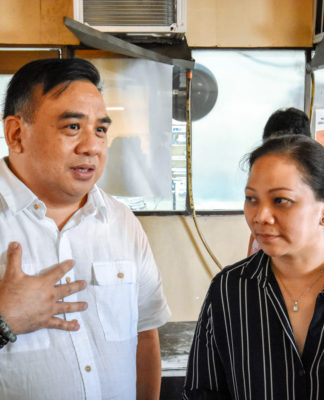PLANTS are a rich source of potential drugs that relieve pain.
This was the subject of a lecture titled “A study of Indole Alkaloids found in the Tropics” delivered by Dr. Hiromitsu Takayama last Sept. 12 at the Tanghalang Teresa Quirino the UST Graduate School (UST-GS).
Takayama, a professor and research scientist from Chiba University, talked about several indole alkaloids extracted from three Oriental plants.
These plants are Gelsemium elegans Benth of the Family Loganiaceae, Hunteria zeylanica from family Apocynaceae, and Mitragyna speciosa from Family Rubiaceae.
According to Takayama, G. elegans acts as an analgesic and relieves stomach spasms. Alkaloids such as sarpagine, koumine, gelsemine, humantenine and gelsedine were extracted by his team of researchers.
Meanwhile, H. zeylanica relieves inflammation and gout, and the alkaloid hunterioside was responsible for these beneficial effects.
M.speciosa, on the other hand, acts like morphine in relieving pain, has depressant properties like opium, and yet acts as a stimulant like the coca plant.
The mitragyna alkaloid, Takayama says, is comparable to morphine in activity, yet it is not addictive.
With complex diagrams and steps, he explained the processes involved in isolating these potent compounds.
Meanwhile, students learned about the evolution and protection of intellectual property rights through a talk titled “Development of New Processing Technologies from pre-conception to Patent Application and Licensing” given by Dr. Marjorie Medina at the College of Science AVR last September 12.
Medina, a scientist affiliated with the research center of the US Department of Agriculture in Philadelphia, explained that this involves a series of steps that involves a lot of research, making concepts, application for patents with the US patent office and finally awarding of exclusive patent rights to the research.
As an example, she cited her work titled “Developing new processing techniques to reduce pathogen contamination in the slaughter and processing operations.”
Medina said that she sought to know how to prevent further cases of foodborne illnesses caused by Escherichia coli 0157:H7-contaminated beef in the US.
With the use of biosensors and microbiological techniques, she found that E. coli binds to the collagen of beef muscle and its binding was largely blocked by a select group of naturally occurring food additives.
These additives are in the form of carrageenan, a chemical compound derived from seaweeds which she found were sourced from Cebu.
For this research, she was awarded a gold medal for active technology transfer in the private sector. Stephen Roy O. Chua-Rojas












